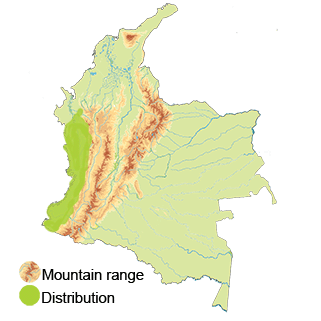Bronzy Hermit
The Bronzy Hermit (Glaucis aeneus) Read in Spanish
Appearance: The Bronzy Hermit is a medium-sized hummingbird with distinctive plumage. Males of this species typically have a bronzy-green upperparts and a bronzy-buff throat, giving them a striking appearance. Females have similar plumage but tend to be slightly duller in coloration. Both sexes feature a long, slightly curved bill adapted for feeding on nectar from flowers.
Habitat: The Bronzy Hermit is primarily found in humid tropical forests and montane forests of the Andes in Colombia. It inhabits forest understories, edges, and clearings where there are abundant flowering plants to serve as food sources. This species is typically found at elevations ranging from lowlands to mid-mountain regions.
Behavior: As a hummingbird, the Bronzy Hermit is known for its aerial acrobatics and swift flight capabilities. It feeds on nectar from a variety of flowering plants and may also consume small insects and spiders for protein. This species is sometimes solitary but can also be seen engaging in territorial behaviors around food sources.
Breeding: The breeding behavior of the Bronzy Hermit generally involves courtship displays by males to attract females. Nests are usually small cups made of plant fibers and down, placed in a sheltered location within the forest. Females typically lay two white eggs, which they incubate alone for a period of time before the young hatch.
Conservation Status: The conservation status of the Bronzy Hermit in Colombia is relatively stable, as it is not currently considered globally threatened.
Distribution
The Bronzy Hermit (Glaucis aeneus)
Andean Region: The Andean region of Colombia is a significant area where the Bronzy Hermit is commonly found. Within the Andes, this species can be spotted in montane forests and humid tropical forests at various elevations. The Andean region provides diverse habitats that support the presence of the Bronzy Hermit, particularly in forest understories and areas with abundant flowering plants.
Northern Andes: The northern part of the Andes Mountains is another important region where the Bronzy Hermit is distributed.
Western Andes: The western Andes Mountains in Colombia also serve as a distribution area for the Bronzy Hermit. Humid forests and forest edges in the western Andes provide essential resources for the species, such as food and nesting sites.
Taxonomy
The Bronzy Hermit (Glaucis aeneus)
- Kingdom: Animalia
- Phylum: Chordata
- Class: Aves (Birds)
- Order: Caprimulgiformes
- Family: Trochilidae
- Genus: Glaucis
- Species: Glaucis aeneus
Vocalization
The Bronzy Hermit (Glaucis aeneus)
- Calls: The vocal repertoire of the Bronzy Hermit typically includes short, sharp calls that serve as contact calls between individuals, especially during interactions around food sources or territories. These calls are often brief and can be used as a means of communication among members of the species.
- Chirps and Chatters: Hummingbirds, including the Bronzy Hermit, may produce chirping or chattering sounds during courtship displays or territorial interactions. These sounds are usually brief and may vary in intensity depending on the context.
- Flight Sounds: While not vocalizations in the traditional sense, the sounds produced by the rapid wingbeats of hummingbirds like the Bronzy Hermit are also significant. The high-frequency buzzing or humming created by their wings in flight serves as a form of communication and can be used to signal other individuals or deter potential threats.
- Communication: Vocalizations in hummingbirds, including the Bronzy Hermit, play a role in intraspecific communication, such as signaling aggression, establishing territories, attracting mates, or maintaining social interactions. These sounds are often subtle but essential for maintaining social cohesion and individual recognition within the species.
- Variability: The vocalizations of individual Bronzy Hermits may exhibit some variation in tone, pitch, or intensity, allowing for recognition of specific individuals or signaling of different behavioral states.





